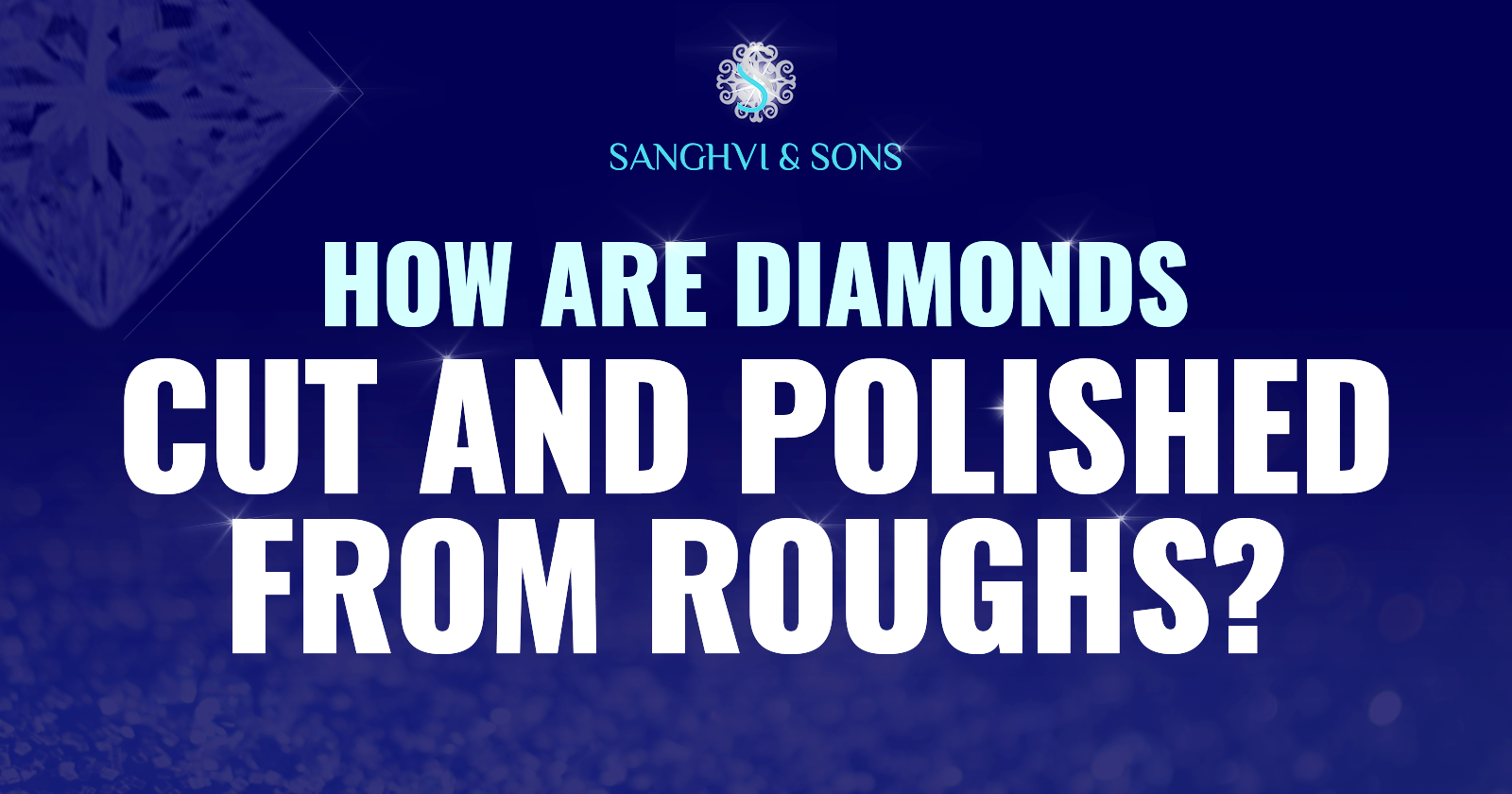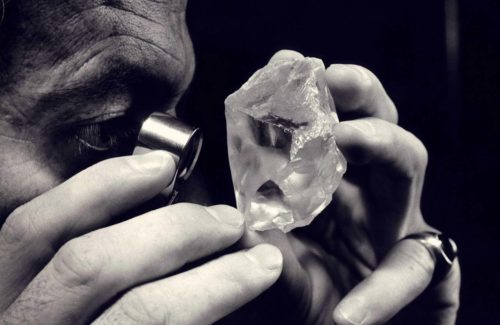Our Heritage

Have you ever imagined that you could hold a piece of history from deep within the Earth? Yes, I am talking about diamonds, a symbol of ageless beauty and radiance. These diamonds start as rough rocks hidden below us, waiting to transform into stunning gems.
Today, in this blog, we will explore the amazing process of turning rough diamonds into beautiful gems. It's a bit like a magic trick by experts who use special tools. Every move experts make affects the transformation of these beautiful gems.
A rough diamond is a diamond that has not been cut or processed. They are mined in naturally occurring shapes such as triangular, round, oval, heart and cubic. This is due to the extreme heat and pressure beneath the ground that make carbon atoms fuse in a specific structure.
In the modern era, diamond mines have become highly mechanized. Miners use controlled explosions to break layers of soil and rock, some of which reach depths of more than 600 meters. Afterward, tractors and trucks transport this mixture of soil, sand, and rock to processing facilities. Within these facilities, conveyor belts guide the material through machines designed to extract the precious diamonds.
Rough diamonds need to be cut and polished for a few important reasons. First, they come out of the ground in their natural, rough state, which often lacks the sparkle and shine that makes diamonds unique. Cutting and polishing help bring out their hidden beauty, making them more attractive and valuable. Additionally, this process gives them a standardized shape. This improves diamond clarity and maximizes their sparkle and brilliance, making them dazzling gems. So, in short, cutting and polishing is like a makeover that turns these rough rocks into the stunning diamonds we all love.
The Ultimate Process of Diamond Cutting and Polishing:-
Now, we will understand how to cut a diamond and make the best value out of it:
Diamonds are tough, so the best way to cut them is with another diamond. Sometimes, lasers are used, especially for tasks like Cleaving and Bruting. In a typical workshop, you'll find tools with edges coated in diamond dust. These are what skilled artisans depend on for accuracy when cutting diamonds.
But before diving into the fascinating world of diamond cutting and polishing, there's an often-overlooked but crucial step: carefully sorting rough diamonds. This step is like the first step of the entire process.

It's all about making our work smoother by prioritizing specific rough diamonds based on some essential factors:
● Model (sawable or makeable)
● Color
● Clarity
● Fluorescence
● Strain
But there's more to it. Sometimes, we even consider a technique called "window polishing." This involves delicately polishing one or more tiny facets onto the rough diamond. This process helps in getting a closer look and making more accurate decisions about the diamond's clarity. It's all part of the art and science that goes into transforming these precious gems.
Step 1: Planning
Planning to cut a rough diamond is one of the most important stages of getting things right. It can be a time-consuming process, but it also determines the diamond's value after the polishing.
During the planning stages (Diamond Cutting Process), the skilled diamond cutter examines the rough diamond to figure out how to cut it efficiently so there's less waste and more valuable material. During this process, the diamond cutter considers the diamond's shape, size, clarity, and color. This process often involves using a Sarin machine to generate precise measurements from the rough stone.
Using this valuable data, specialized computer software transforms the measurements into intricate 3D models, providing the cutter with invaluable insights into the optimal methods for refining the rough diamond.
Step 2: Cleaving
Cleaving is the process of breaking the rough diamond into smaller pieces. Cleaving the rough diamond allows the cutter to work on every small diamond separately and utilize its value to the very extent. This process uses a laser blade from oil and diamond powder with a copper layer. Using diamond powder in the laser is very important. As we know, only a diamond can cut another diamond. This minimizes the chances of wasting even a tiny portion of the diamond.
Step 3: Bruting
Bruting is the process of shaping a rough diamond into a rough round shape. Whether working with sawn, cleaved, or whole stones, the cutter's skill is vital. During this process, two rough diamonds come into contact, and the friction gradually smooths the corners of the diamonds until they take on a rounded shape. This is where the stone takes on its exact shape, including its size, where the edges meet, and the top and bottom facets (sides) are positioned. This is done by using a spinning diamond wheel.
Step 4: Blocking
After bruting the rough diamond, the next stage is blocking. Blocking is creating the diamond's main facets (sides). It involves polishing 8 facets on the crown and 8 facets on the pavilion section. This whole process is done using a diamond-tipped lathe.
Step 5: Polishing
Polishing is the final step in cutting and polishing a rough diamond. The diamond polishing process uses a Polishing wheel and diamond powder. Using a polishing wheel and diamond powder, the cut and faceted diamond brings out its shine and smooth finish. After the diamond polishing is done, they are sent for inspection to check if it meets the specifications given by the manufacturer.
After clearing all the stages, now the diamond is ready to be set in jewellery to enhance your beauty and charisma.
In summary, the process of making shiny diamonds from rough rocks is like a
magical transformation. It begins with mining diamonds from deep within the Earth. Then, experts use special tools to carefully cut and shape these rough diamonds into beautiful, sparkling gems. This process makes the diamonds look even more attractive and valuable. It's like turning something ordinary into something extraordinary. It's a fascinating journey that brings out the beauty hidden within the Earth.
If you are interested in how this whole process works, you must watch this video.
https://beyond4cs.com/cut/how-diamonds-are-polished/
Diamond Manufacturing Process - Step by step | DU-GEMOLOGY | Uday S DeyD